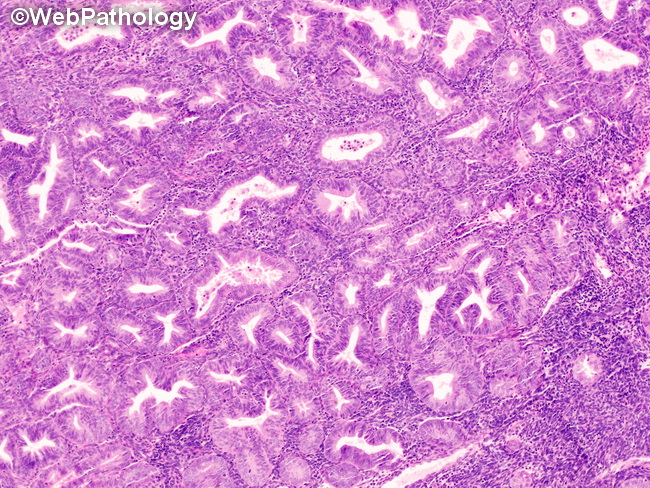Endometrial Hyperplasia : Treatment


Comments:
Treatment of Endometrial Hyperplasia (EH): The treatment of EH depends upon several factors, including patient's age, desire for future childbearing, surgical risk, and the presence of cytologic atypia. Nonatypical EH is managed conservatively with progestins and gonadotropin-releasing hormone agonists. The vast majority of patients show regression to benign endometrium on subsequent sampling after several months of treatment. The diagnosis of atypical endometrial hyperplasia/endometrioid intraepithelial neoplasia (AEH/EIN) is associated with a high risk of concurrent, as well as future, endometrioid endometrial carcinoma. Therefore, the standard of care for EIN in peri- or post-menopausal women is simple hysterectomy with bilateral salpingo-oophorectomy. About 15-20% of patients will be found to have endometrioid carcinoma in hysterectomy specimens, almost always low-grade and non-invasive (or minimally invasive). Non-surgical treatment for AEH/EIN: For women with AEH/EIN who want to preserve fertility, the treatment consists of high-dose progestins given orally or via intrauterine device. A common follow-up protocol is to perform biopsy every 6 months following withdrawl until at least 3 negative biopsies are obtained. . About 75% of patients show complete resolution on initial follow-up biopsy. Once the treatment is stopped, 35% of these have AEH/EIN recurrence. Persistence of AEH/EIN or progression to endometrial carcinoma is seen in 25%, 51%, and 72% of women within first 3 yrs, after 3 yrs, and after 7 yrs. respectively of initial diagnosis.



